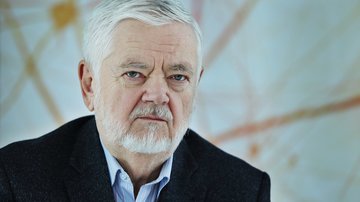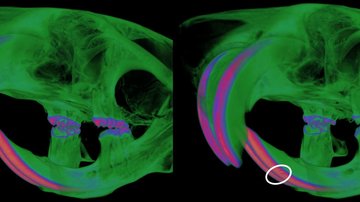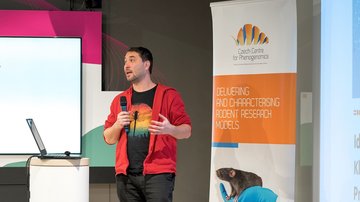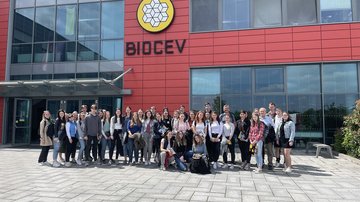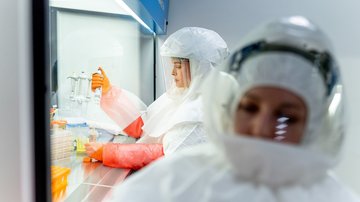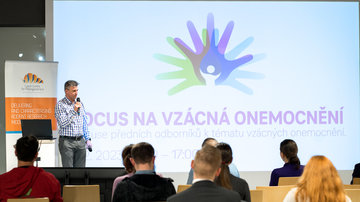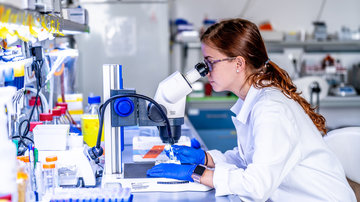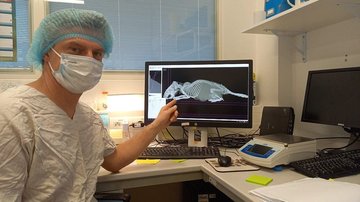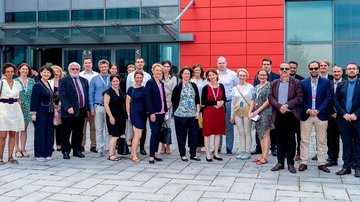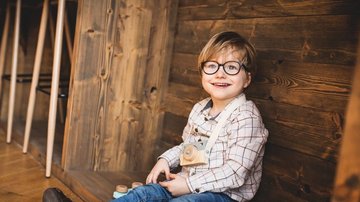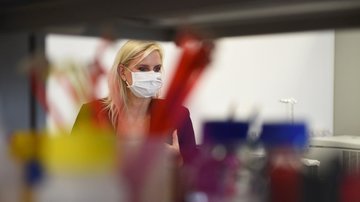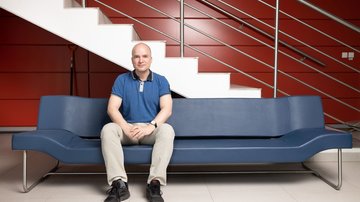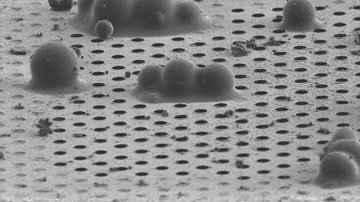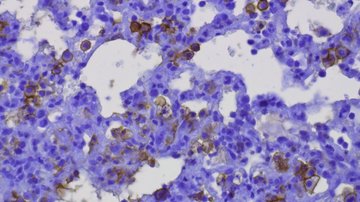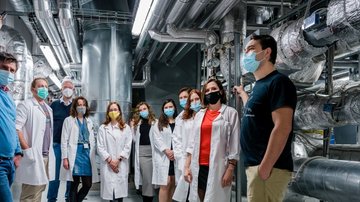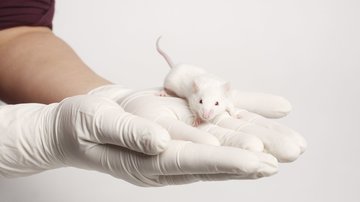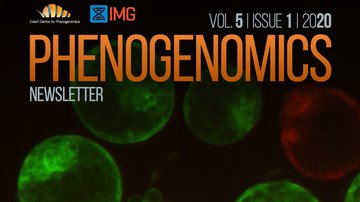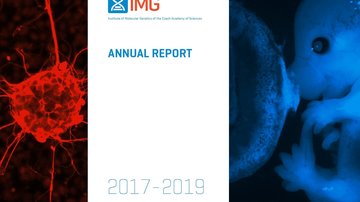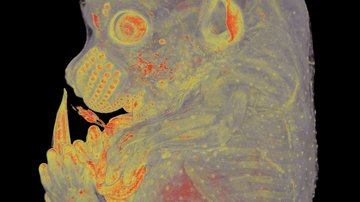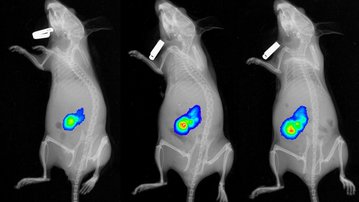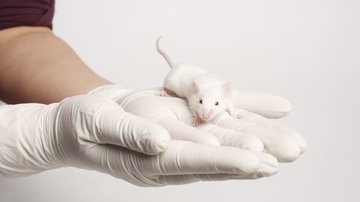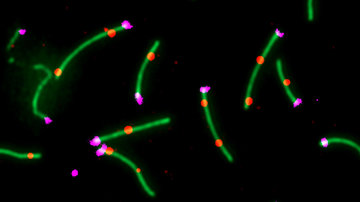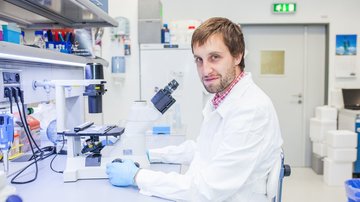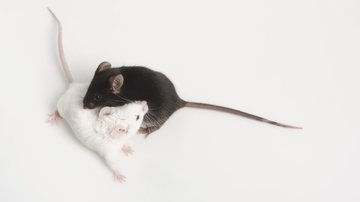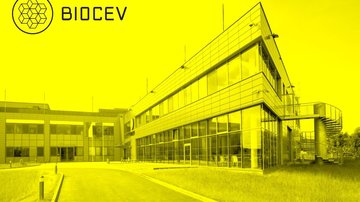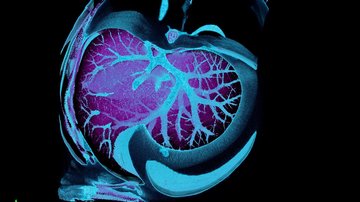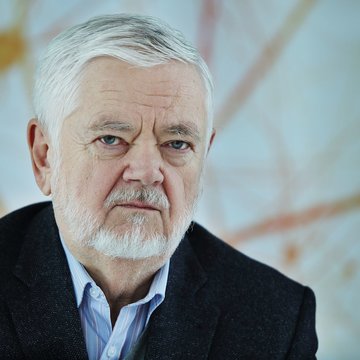
The Czech Centre for Phenogenomics
Scientific knowledge is like building the Tower of Babel, says Prof. Jiří Forejt. His career at IMG began 55 years ago
On Friday 24 November, winners of the 22nd annual competition “Česká hlava” (Czech Brains) 2023, the highest award for the Czech scientists, were presented at a press conference. The Special Prize of the expert jury was awarded to Tomáš Brabec from the Laboratory of Immunobiology of Dominik Filipp. Just seven years ago, the laureate of the National Award was another representative of the Institute of Molecular Genetics of the Czech Academy of Sciences (IMG), Prof. Jiří Forejt, M.D., Ph.D., DSc.
“Professor Forejt is recognized as a world-class researcher in the field of so-called functional genomics. Forty years ago, as a student, he was the first in the world who discovered a region in the mouse genome that controls infertility and is involved in the origin of new species. He also created a mouse model that shares many features with Down’s syndrome, which has since been used to further research. The results of the scientific research of Prof. Forejt and his team are appreciated by the international professional community and commented in the most prestigious scientific journals,” said in 2016 the then Deputy Prime Minister Pavel Bělobrádek on Prof. Forejt’s award.
This year you are celebrating 55 years of scientific activity at the IMG. What is this feeling?
Jiří Forejt: It’s like climbing a lookout tower and before you reach the top, you look down and get a little dizzy. But more seriously, it’s been a very creative 55 years, work was and still is my only hobby, I probably wouldn’t change.
How do you recall your childhood and youth in the countryside?
I remember the school, and not alone. Every year in June, we, the graduates of 11.B eleven-year high school, meet in one of the pubs in Ledeč. I fondly recall a number of teachers, Prof. Bouz tried to arouse our interest in classical music and fine arts, and Mr. Louda, the teacher, uncovered for us the beauty of biology and chemistry.
When did you decide to study medicine?
I was very interested in natural sciences, but my parents convinced me – if anything, do something proper, go to medicine. In retrospect I appreciate most of their decisions even if I don‘t understand how they reached them. For example, they enrolled me in the Sunday school of the Evangelical Church of the Czech Brethren in Zruč nad Sázavou, which was a big deal in the 1950s, but they didn’t go to church themselves. By the way, I was confirmed by Alfréd Kocáb, an evangelical pastor and a rare renaissance personality with encyclopedic knowledge, father of Michal Kocáb.
Then I was directed to medicine, although there was no physician in whole my family. I didn’t get to medicine the first time, perhaps because of my wrong background, my father was a clerk, and I guess that religion didn’t help either. But I was given the opportunity, as an orderly of the University Hospital in Hradec Králové, to attend preparatory courses, unofficially it was called the zero year, and after a year, I was 17, already with a working-class background, I was accepted to medicine.
What led you to pursue the academic research at university rather than a career in the clinical medicine?
When I started my zero year, I was assigned to the tissue bank of the University Hospital as a laboratory assistant. And after some time, my first role model, Associate professor Rudolf Klen, sent me to the Department of Biology at the Faculty of Medicine to learn how to preserve living cells by freezing. I then stayed at the Department of Biology for the whole period of my studies, first as so called “pomvěd”, a supporting research aide, and later as a part-time assistant. When I graduated in 1968, I already had my first first-author publication in Folia Biologica [1] on the effect of glycerol on tissue culture cells.
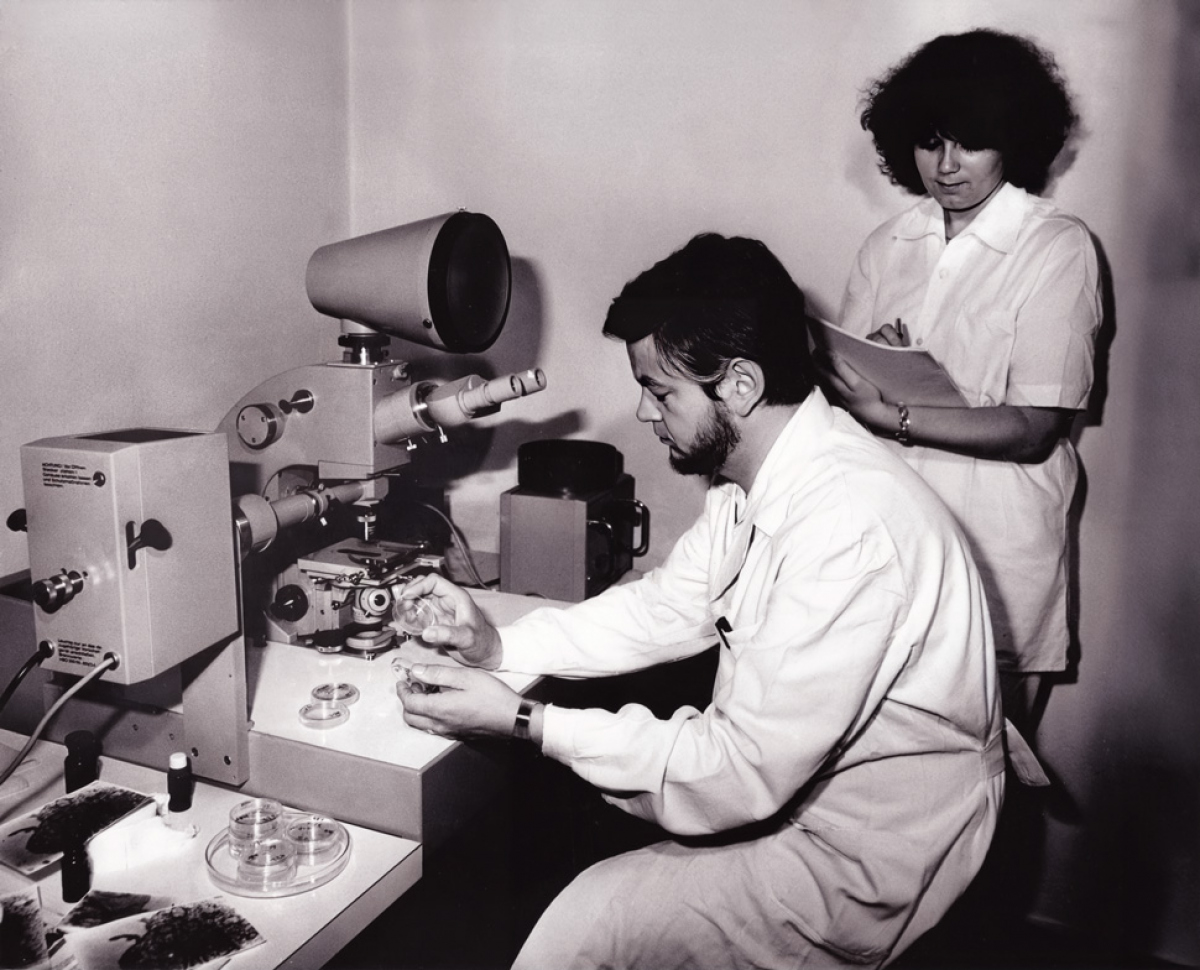
After graduating in medicine, you came to the Institute of Experimental Biology and Genetics of the Czechoslovak Academy of Sciences (later known as the Institute of Molecular Genetics), which at that time was headed by the eminent Czech immunologist Milan Hašek. What are your memories of him? Do you have a common story?
I used to pass by Prof. Hašek. The first time was when I went from Hradec Králové to Prague to the head office of the Institute of Experimental Biology and Genetics of the Czechoslovak Academy of Sciences (IEBG) for an interview. As the graduate of the Hradec Králové Medical Faculty, I didn’t know Prof. Hašek, I couldn’t even remember his name! Something to do with Švejk, perhaps? – Švejda? I was looking for Professor Švejda. Fortunately, Prof. Hašek was not present, because I had mistaken the date of the interview, which had already taken place, but I was lucky, I was accepted in absentia. After half a year I had to go to the compulsory one-year military service, and when I returned in 1970, the normalization was already in full swing and Prof. Hašek was no longer the director, he was a broken man.
Who have you met scientifically at the Institute, and who has influenced you the most?
It was certainly my supervisor Pavol Ivanyi, my biggest role model. Pavol was an enthusiastic experimenter, he had an incredible passion for science and the ability to infect those around him with his enthusiasm and original thinking. He was the co-discoverer of the HLA genetic complex for human transplantation antigens, for which Prof. Jean Dausset was given the Nobel Prize. His counterpart was Alena Lenger, a distant lady impressive for her knowledge, logical reasoning and refinement of the written word. The two did not like each other very much, Ivanyi considering her research as sterile and Lenger him as a collector of experimental data.
But I liked to bring my first manuscripts to Dr. Lenger for internal review; she corrected them with tact, and I learned a lot from her in scientific writing. When Ivanyi emigrated and she found out she was dying of leukemia, she asked me to take over her laboratory. But I had an inappropriate cadre profile, so I was put in charge, but not appointed until the revolution in 1989.
Why did you study the house mouse subspecies in your dissertation and not the immunogenetics like your supervisor Pavol Ivanyi?
As a newly graduated physician I wanted to focus on human transplantation antigens, which was the main topic of the department, and I had minimal knowledge of genetics at that time. During my student years, we were still being lectured on Soviet Michurin genetics, into which they carefully grafted real Mendelian genetics, and the result was a total chaos for the students. But Pavol assigned me, as a project, the genetics of the T/t complex, which includes the mouse H2 complex for transplantation antigens, so I signed up for two semesters of external study of genetics with Prof. Jan Nečásek at the Faculty of Science, Charles University, and started working on the genetics of infertility in mouse hybrids and the possible relationship to the T/t complex.
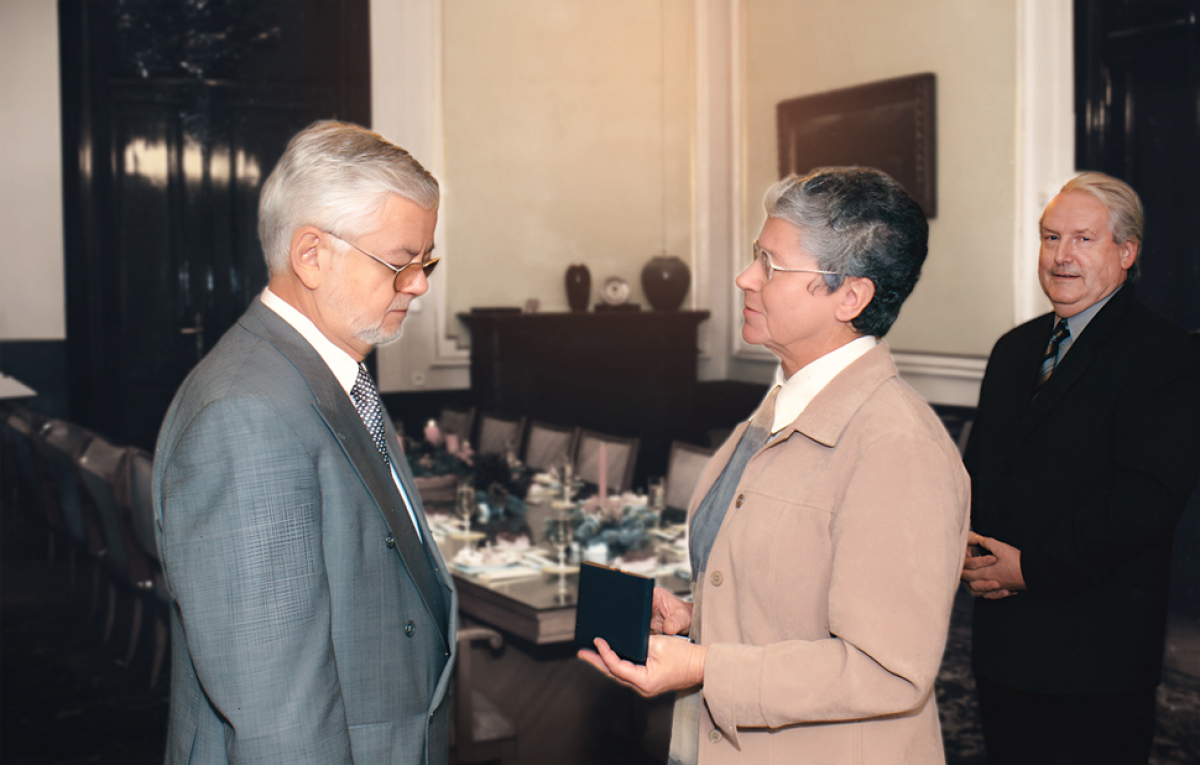
How difficult was to type and edit the scientific articles before sending them to the press in your scientific beginnings when computers were not available?
It wasn’t difficult, but it was slow. We wrote in several copies, but you couldn’t put the copy paper on the wrong side. Then it was cut and pasted, and the secretary of the department finally typed up the final version. My wife still remembers helping me at home to cut out mouse chromosomes from the photographs and glue them onto Bristol boards. We were tracking the scientific literature through Current Contents, the paper predecessor of today’s Web of Science. Most foreign journals were unavailable, so we wrote weekly the requests for separates – pre-printed correspondence slips on which we filled the author’s name and address and the article citation.
What discoveries have earned you a place among the world’s most respected mouse geneticists? Which of your discoveries do you consider most significant?
Scientific knowledge is a bit like building the Tower of Babel, each brick is tied to the previous ones and forms the foundation for the next layer, and the building never ends. My contributions are related to the knowledge of the evolution of life on Earth, specifically the genetic mechanisms of the origin of new species and the related protection of genome integrity during the origin of sex cells. Specifically, our discovery of the Prdm9 gene (originally Hybrid Sterility) [2] introduced the first mammalian gene that separates closely related species. In 2009, our work was commented in the world’s top journals such as Science, Nature and Nature Reviews Genetics.
My lab has also contributed to the fundamental discovery of genome reprogramming [3, 4], a process in which the development is reversed, a specialized cell from the adult can be brought back to the universal embryonic level. Specifically, we were the first to demonstrate that it is possible to revive the activity of embryonic genes that are silenced in the white blood cells of the adult.
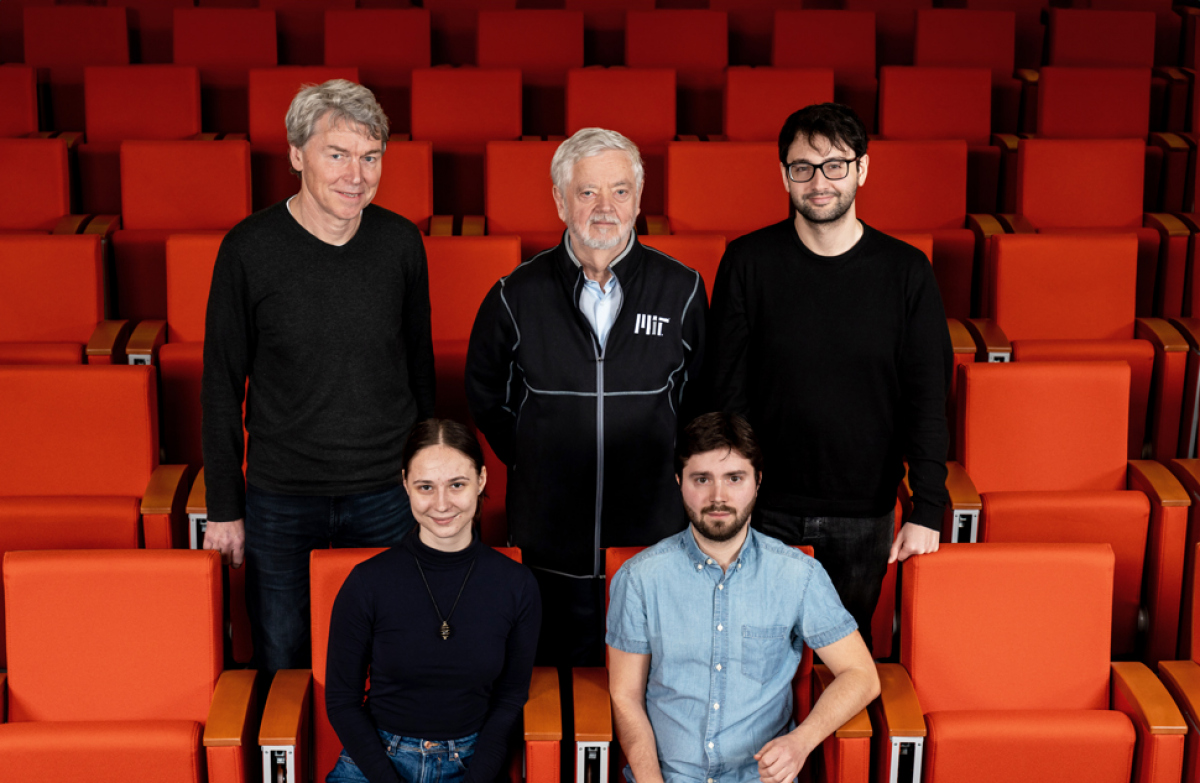
We also had a priority in the prediction of sex chromosome X inactivation during male germ cell development [5]. But in the latter two cases we have not been able to defend our priority in a fierce international competition, and these discoveries are mostly attributed to teams that have unwittingly, but sometimes consciously, built on our work.
But the most important projects are always the current ones. We are completing two major projects, in the first we are trying to prove that the extremely universal DNA replication error correction mechanism that works from bacteria to yeast to plants to humans is also the mechanism that enables the evolution of new species of all life forms on Earth. The second project is looking at the role of small RNA molecules whose genes are on the X sex chromosome in controlling infertility in interspecies hybrids. I would very much like to see both projects successfully completed and published before I come to a definitive end.
What did the Velvet Revolution mean to you personally?
At the end of 1989, I was on a six-month stay at Hopital Saint-Louis in Paris, and the first sign that the ice was finally breaking was a letter from the head office of our institute, which instead of the usual “Dear Comrade Doctor” read “Dear Sir Doctor”. A new phase began, with no cadres, approval of every letter abroad, but also a period of uncertainty about what would happen to the Academy of Sciences and the support of basic research.
In particular, my group was greatly supported at that time by a collaboration and a joint NIH grant with Prof. Jan Klein, our distinguished geneticist at that time working at the University of Miami. Later, by other NIH grants with Prof. Lee Silver of Princeton University and with Prof. Ken Paigen of the Jackson Laboratory in the United States. Also at that time I received a ten-year grant from the second largest biomedical foundation in the world, the Howard Hughes Medical Institute in the United States. Such international collaboration was unimaginable in the pre-1989 era.
What did you and your lab gain from your international stays at the Imperial Cancer Research Fund in London, the Pasteur Institute in Paris and Princeton University?
They brought me irreplaceable experience. Soon after my first publications, I was invited to several foreign institutions, but I was only allowed to travel for the first time in 1980 for a three-month stay at the Pasteur Institute, by which time I was already 36 years old. At that time I extended my stay for another three months, to the disapproval of the director of the institute, who vouched for me and then had problems with it. I remember Francois Jacob introducing me to André Lwoff, both Nobel Prize winners. Lwoff merely commented on my explanation that my family could not come with me – are they being held hostage, n’ est-ce pas?
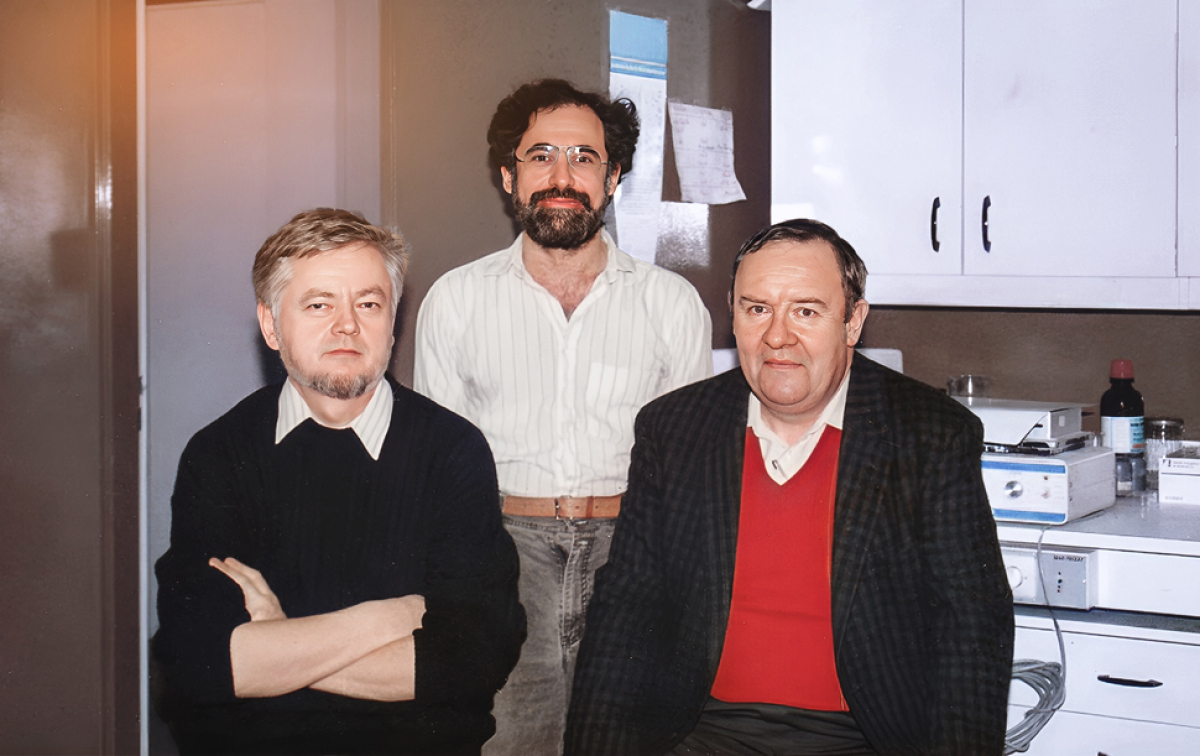
The international isolation was a great handicap amplified by the underfunding of our science at that time. I was at the Imperial Cancer Research Fund in London at the beginning of 1989, when the control apparatus of the Communist Party had already resigned and anyone with funding could travel. I worked in the department of Prof. Hans Lehrach, a pioneer in Systems Genetics and many molecular genetics technologies, a great man and an exceptional molecular geneticist. I spent a total of 12 months at Princeton University as a visiting professor at the invitation of Prof. Lee Silver. This stay gave me an insight into the very intense and productive “American” way of doing science, including working with students.
When I returned in 1995, I repeatedly compared the way the work was organized at Princeton and at our institute, specifically the weekly meetings of the professors where they reported the results of their laboratories. The discussions were sometimes unusually tough but fair. To this day, the meetings of groupleaders at our institute are informally referred to as “Princetons”.
Do you have any funny stories from your travels?
I’ve probably mentioned this somewhere before, but I experienced an almost surreal scene on a repeated visit to The Jackson Laboratory in Bar Harbor, Maine USA. Early in the morning before the conference, I went for a walk on the shore where a small guest house for the Institute, Low Seas Cottage, stands in a wooded area.
As I was returning from the sea I saw an old man standing in the middle of the woods in his nightwear, eyeing me suspiciously. I remembered the occasions when an uninvited visitor had been shot without warning on someone else’s property and quickly began to explain the reason for my presence. The man shook my hand and introduced himself, “My name is Victor McKusick.” Thus, for the first and last time, I met in person a living legend, the founder of medical genetics.
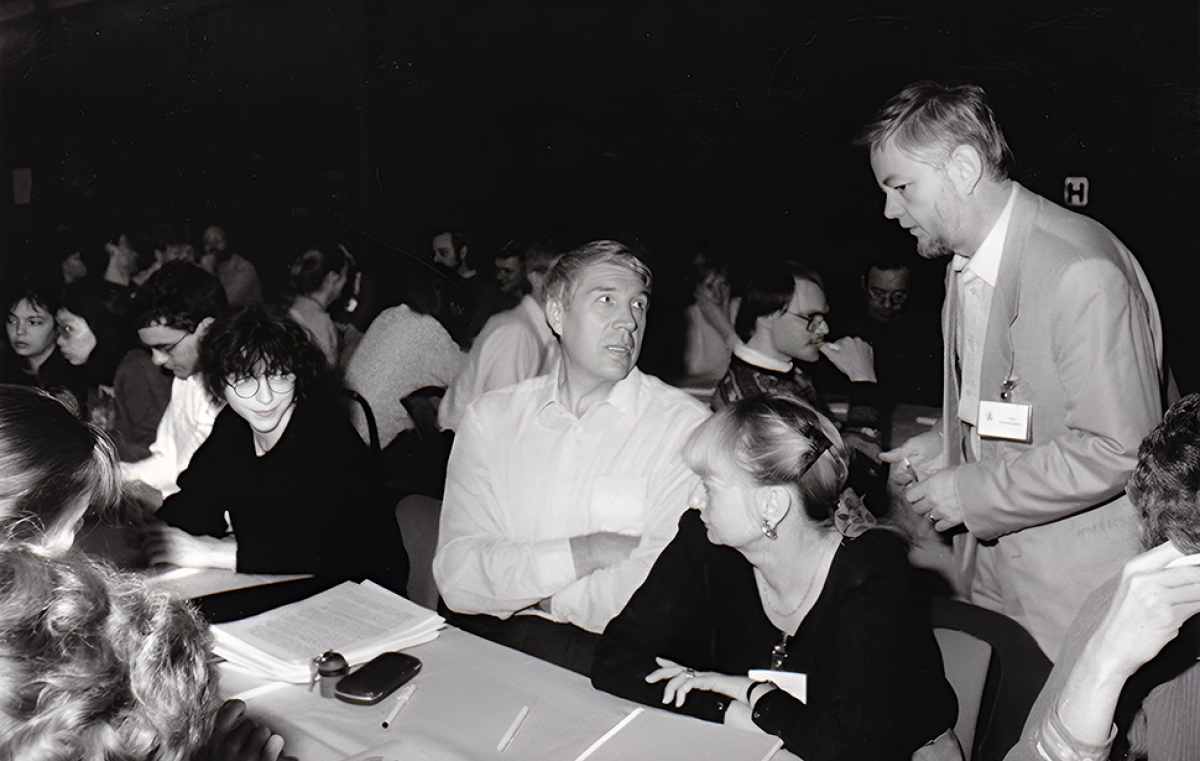
What value do you attribute in the academic sphere on awarding the title of Doctor of Science to outstanding Czech scientists?
It is a pity that part of the scientific community considers the title DSc still problematic. Yet it is nothing other than an expression of respect for scientific excellence, an award that scientists themselves give to leading personalities in their fields. The value of some other titles may have varied as the laws of the market have taken them where they do not belong. By contrast, the DSc (Research Professor in English) has clear criteria and applications for the title are judged by committees of mostly PhDs in each discipline according to publicly available rules. The Board for the scientific degree of DSc and the Scientific Council of the Czech Academy of Sciences only ensure that the rules of the individual committees are harmonised and followed. The DSc has been awarded for 19 years and only about half of the holders are from the Czech Academy of Sciences, the others are from universities or departmental workplaces. It would probably help if the DSc become a state-recognised scientific rank.
What did the “Česká hlava” (Czech Brains) award mean to you?
It is an exceptional recognition for my lifelong work, and I appreciate this award very much and the rare company I have found myself in. But I have to admit that I still haven‘t watched the DVD with recording of the award ceremony (in Czech). I’m more of an introvert, and I felt miserable when the award was presented in front of the TV cameras.
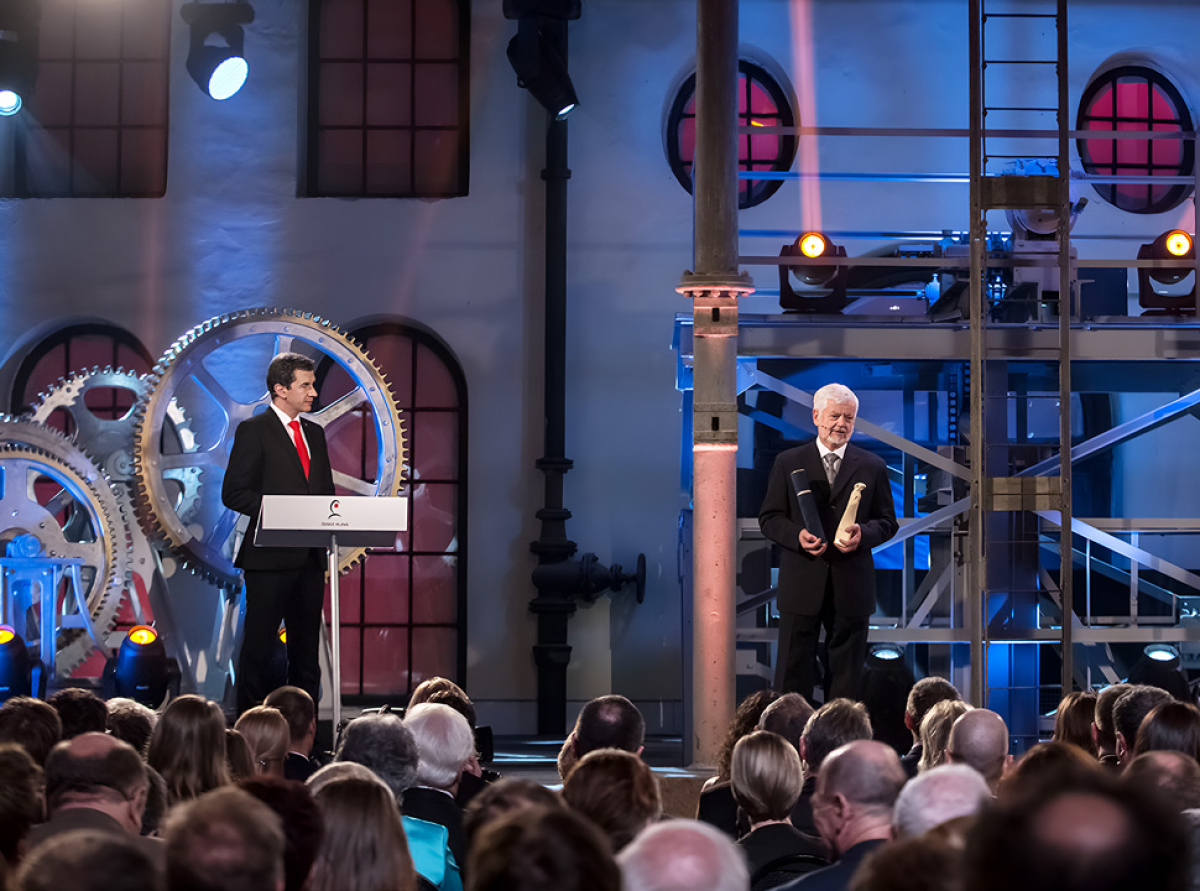
You work at the Czech Centre for Phenogenomics (CCP), which is part of IMG and the BIOCEV Centre. What makes this infrastructure special and how do you find working in this modern environment?
We moved to the CCP when it opened. This was logical given that we are a Mouse Molecular Genetics group and that, at least in the very beginning, we contributed to the creation of the Centre through our contacts with similar groups in Europe. The Centre is now a leading European facility that can model human diseases and pathological variants in a mouse model and comprehensively characterise them at the genetic, cellular and organismal level. Abroad, such centres are sometimes referred to as “mouse clinics” and serve as infrastructure used by a number of biomedically oriented departments.
CCP provides a number of valuable services to our lab, from breeding individual mouse strains and preserving them as frozen embryos or sperm to organism-level genetic engineering, where they can specifically remove or modify a gene of our choice in our mice.
Collaboration with other institutes within BIOCEV is also important, and we are currently using protein mass spectrometry to help us identify genes responsible for male infertility in mouse hybrids.
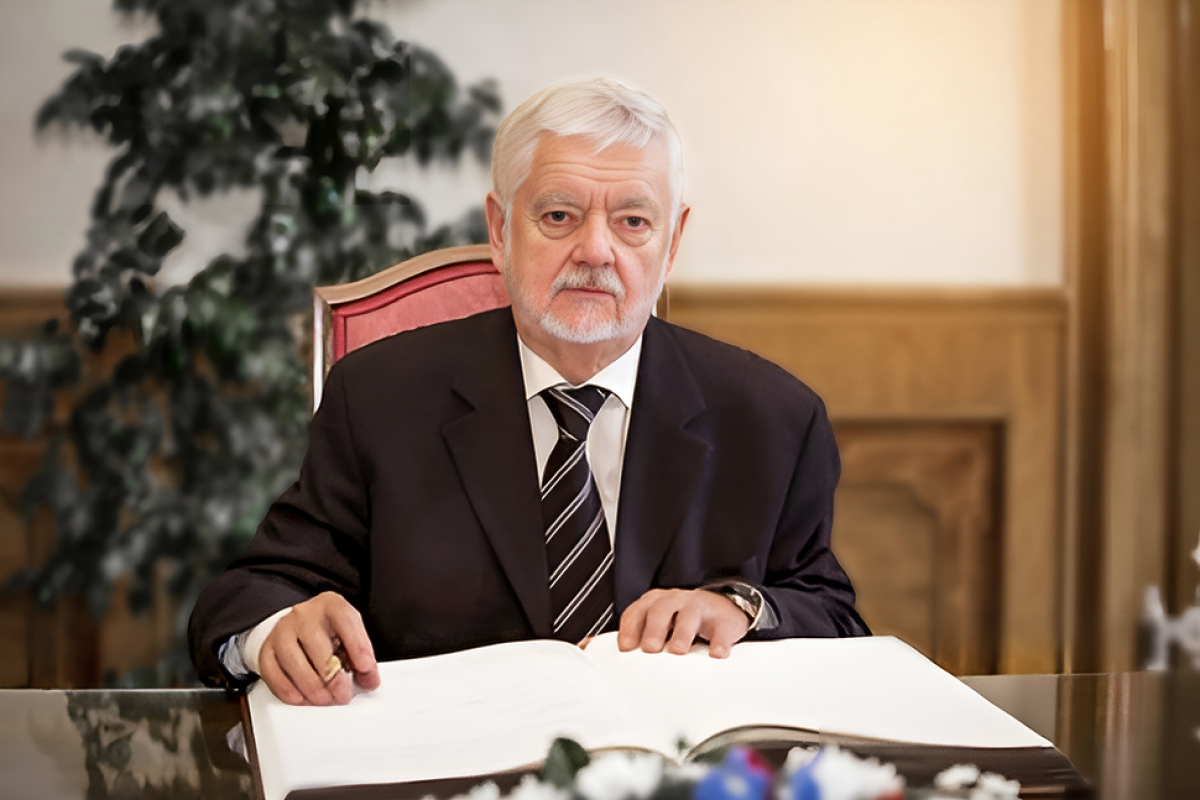
Do you have any recommendation or message for young scientists and students (not only) from IMG?
For one thing, I don’t know if they’re interested in any advice, and I also don’t know if my experience is transferable to today’s budding scientists. But I’ll try two notes, one methodological and one generally strategic.
In genetics and the life sciences more generally, the era of large datasets has been around for some time. In genomics and in molecular biology, new technologies are producing large amounts of data that must be learned to work with. It is not for nothing that bioinformaticians are currently the most in-demand profession. So whatever you do, you should master at least basic bioinformatics skills so that you know what to ask from a bioinformatician and can solve the simpler tasks yourself.
There is a lot of talk today about adaptability in scientific work, about stepping out of your comfort zone. Be careful, once you have found your place in a field where you will be respected by your peers in the world don’t jump to more and more projects just for momentary advantages. “Don’t spread yourself too thin,” as the Latins say today. You can step out of your comfort zone and complement the genetic approach with structural biology, but try to maintain and develop your subject, your field. That way you can go as deep as possible and stay on top of the field.
At your age, how do you maintain your scientific enthusiasm and great desire to keep discovering new things?
As Mr Nulíček, the naive painter in Hrabal’s Bambini di Praga, says: “I don’t keep anything, it’s in me like in a goat.”
Thank you and on behalf of all our colleagues, we wish you to keep it up for years to come!
Authors: Petr Solil and Petr Jansa
Photos: Archive of Jiří Forejt and Czech Academy of Sciences
Prof. Jiří Forejt, M.D., Ph.D., DSc. (1944) graduated from the Faculty of Medicine of Charles University in Hradec Králové. In 1991, he defended his dissertation on Genetics of Mouse Germ Cell Cells and obtained a Doctor of Science (DrSc) degree. In 2002 he was appointed associate professor and in 2006 professor of genetics at the Faculty of Science, Charles University in Prague. From 1993-94, he was a visiting professor at the Department of Molecular Biology at Princeton University in New Jersey, USA. He heads the Department of Mouse Molecular Genetics at the Institute of Molecular Genetics of the Academy of Sciences of the Czech Republic. He discovered the first ‘speciation’ gene in mammals which restricts gene exchange between closely related species. His projects have received repeated support from the National Institutes of Health (NIH) and Howard Hughes Medical Institute (HHMI), USA, and from the FP programs, EU. In the years 2007-2013 he was the holder of the Premium Academiae to support scientific excellence in the Academy of Sciences of the Czech Republic. He has organized several international conferences and is an elected member of the European Molecular Biological Society and the Learned Society of the Czech Republic. He has won a number of awards, including the Gregor Mendel Medal and the Jan Evangelista Purkyně Medal of Honor of the Academy of Sciences of the Czech Republic, the National Award of the Czech Government “Czech Brains” and the Silver Medal of the President of the Senate of the Czech Republic. He has authored or co-authored more than a hundred scientific publications, has been awarded a number of major prizes and is a member of international scientific panels.
Publications
- Forejt J, Půza V. Effect of glycerol on tissue culture cells. Folia Biol (Praha). 1968; 14(2): 156-60. [pubmed]
- Mihola O, Trachtulec Z, Vlcek C, Schimenti JC, Forejt J: A mouse speciation gene encodes a meiotic histone H3 methyltransferase. Science 2009 323(5912): 373-5. [pubmed] [doi] [fulltext]
- Forejt J, Gregorová S, Dohnal K, Nosek J. Gene expression of differentiated parent in teratocarcinoma cell hybrids. Repression or reprogramming? Cell Differ. 1984 Dec; 15(2-4): 229-34. [pubmed] [doi]
- Forejt J, Saam JR, Gregorová S, Tilghman SM. Monoallelic expression of reactivated imprinted genes in embryonal carcinoma cell hybrids. Exp Cell Res. 1999 Nov 1; 252(2): 416-22. [pubmed] [doi]
- Forejt, J.: X-Y involvement in male sterility caused by autosome translocations – a hypothesis. In: Genetic Control of Gamete Production and Function (Eds. P.G.Crosignani, M.Fraccaro and B.Rubin), Academic Press, New York, 1982, p.135-152.

